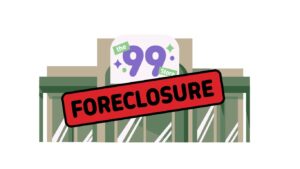
The recent announcement of the closure of 99 cent stores has caused an uproar as people, particularly those from low-income households, scurry to the stores to stock up on items before closing. Dollar stores have been a lifeline for these families for years, with thousands of customers who rely on their cost-effective prices and affordability. Unfortunately, economic conditions have led to the closure of these affordable stores, which will disproportionately impact these already struggling households.
The downfall of the 99 cent store can be attributed to inflation, rising levels of product and changes in consumer demand. Products that are normally available for a dollar plus tax will now have to be purchased from other sources that charge two to three times more than the 99 cent store cost. A simple two-dollar bag of flour will cost seven dollars from establishments such as Safeway. Over time, these costs will add up, making food much more expensive for families that have budgeted based on 99 cent store pricing. The sudden 200 to 300% increase in prices of basic goods will create more financial strain on the households most in need.
According to a study conducted by the University of Southern California (USC) in 2023, about one million Los Angeles (LA) County residents are considered food insecure, a figure exacerbated by the COVID-19 pandemic. The lack of school lunches and business closures made food less accessible, leaving a lasting impact. Businesses were forced to shut down, and people were forced to work from home or go without a job for months. In March, at the start of the pandemic, employment fell by 22.4 million, which is a 15% percent drop. Compared with the Great Recession of 2008, the 15% drop is a 10% increase from the recession period from 2007-2009. This kind of economic crisis was seen across the country and the world. Many were and are still forced to live with economic instability. The stark contrast in unemployment and job loss rates contribute to lasting effects seen today, with residents still unable to afford regular prices on basic goods.
It is important to pay attention to the growing level of local food insecurity right here in the Inland Empire (IE). Current data indicates that 400,000 IE residents do not have access to enough food on a daily basis, putting into perspective how rampant food insecurity is locally. As food deserts, areas that do not have as much access to grocery stores pop up, the closure of affordable stores is especially concerning. This leaves residents forced to pursue options such as fast-food restaurants or more processed food. Healthier options are now considered a luxury and not a norm in food deserts. For communities like these, 99 cent store closures compounded with the economic hardship of the pandemic are just a recipe for total disaster.
Families in food-insecure areas desperately need access to cheap basic goods, especially when government assistance cannot close the gap created by inflation. After making it through unstable economic conditions and a pandemic, the people of Southern California deserve to experience food security with cheaper and affordable options. Situations like these are hard to control with the rising number of people qualifying as food insecure. Still, affordable places like the 99 cent store offered a temporary solution for lower-income families’ struggles. Although the closure of these stores cannot be stopped, it is crucial to acknowledge the communities that are most affected by this decision.







